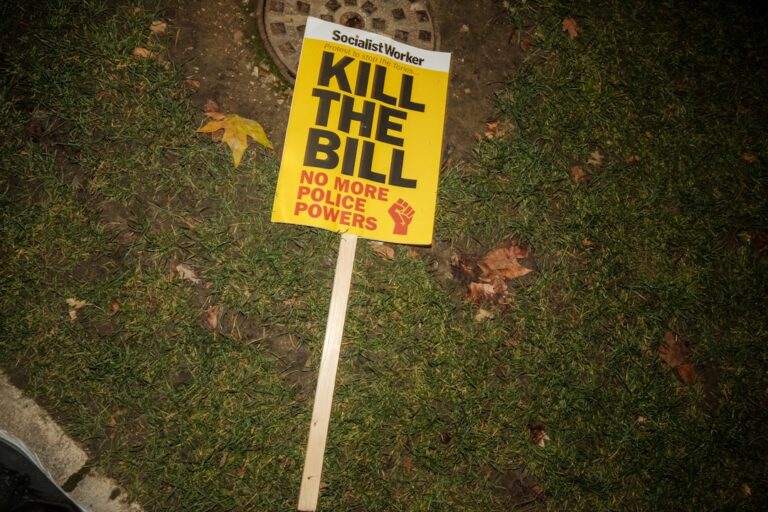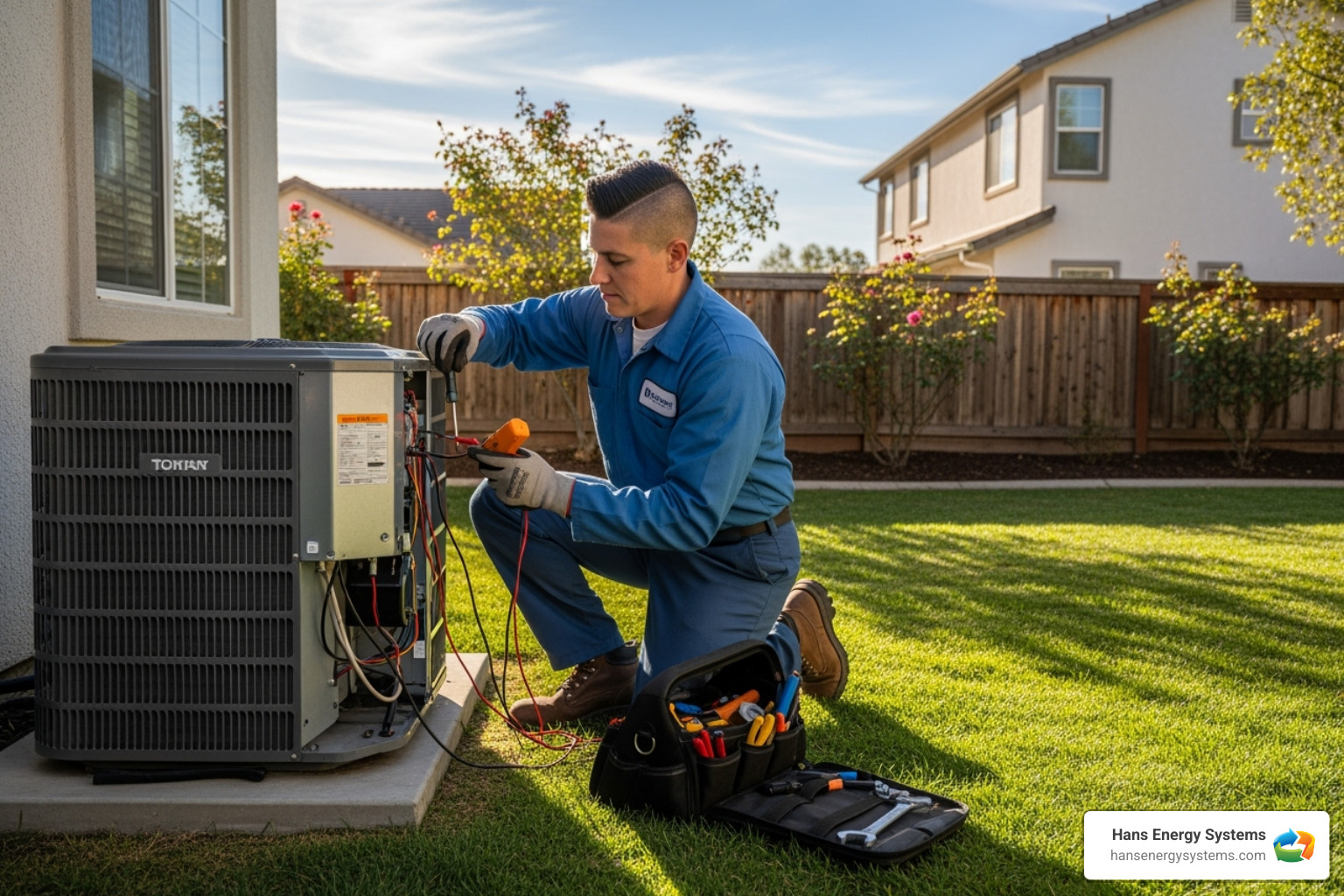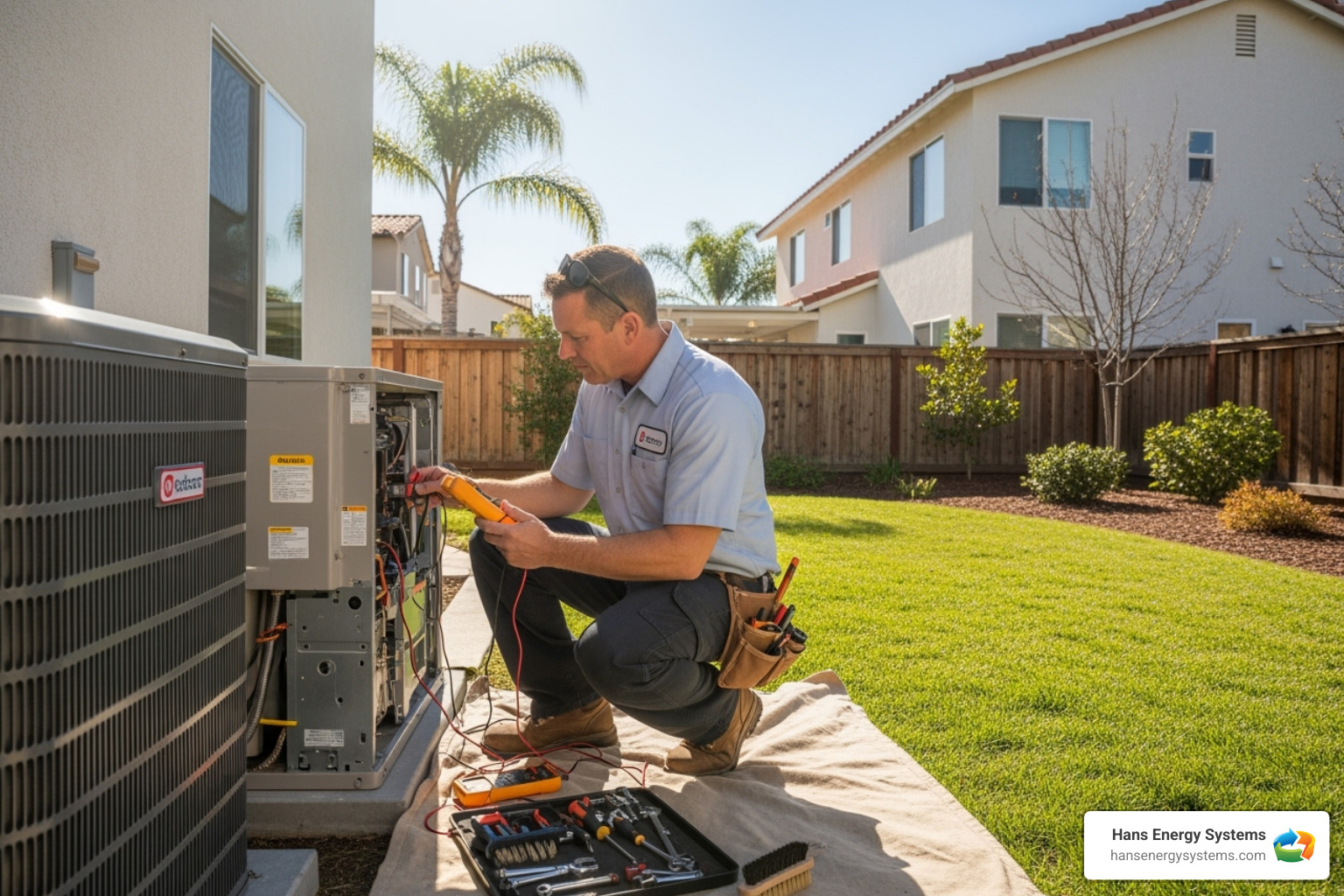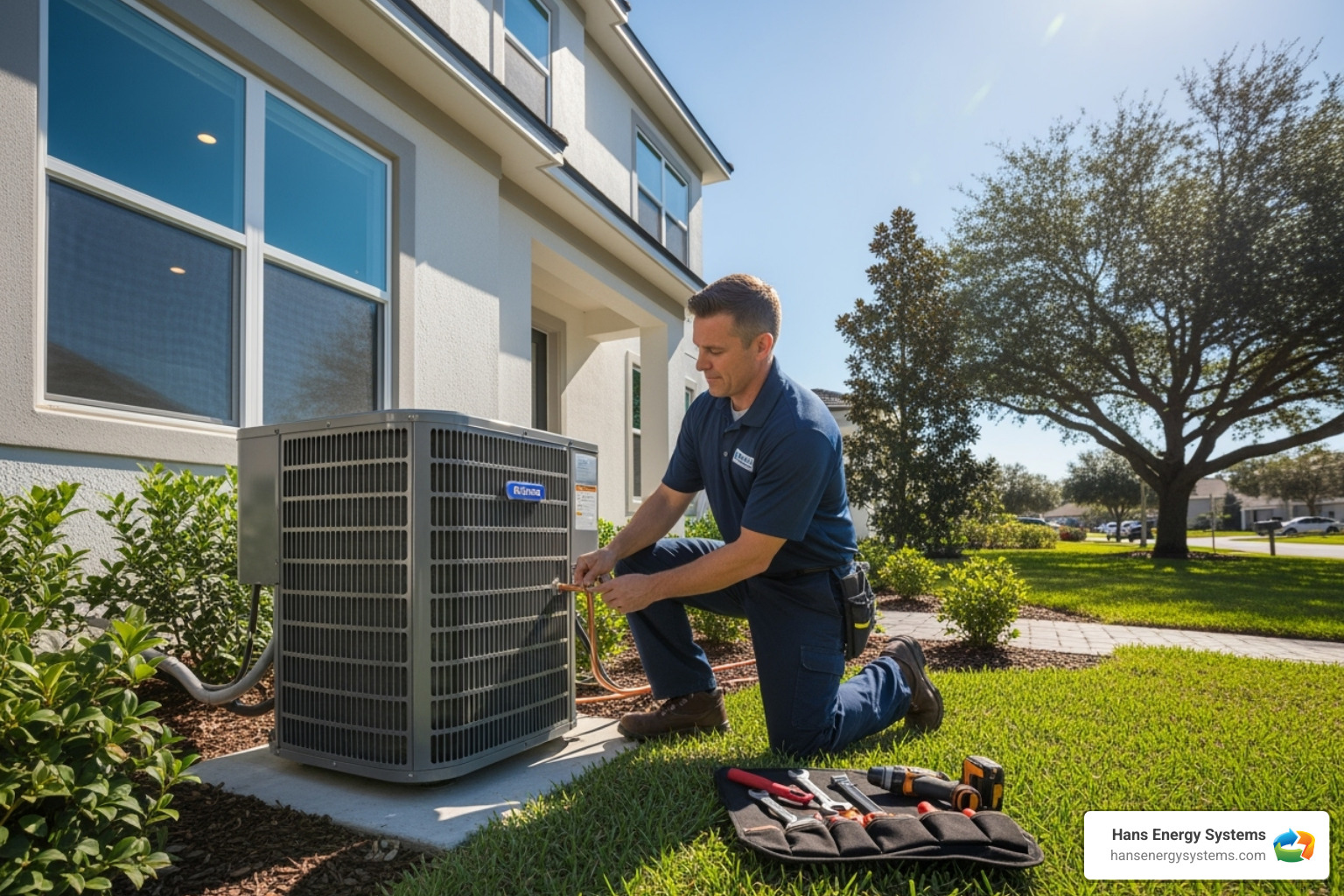Why High Energy Bills Are Crushing California Homeowners
Lower utility bills are a top priority for Southern California residents facing skyrocketing electricity rates. Since 2019, California utility rates have increased 11 times, with a recent hike raising rates by 16%.
Quick Ways to Lower Your Utility Bills:
- Set thermostat to 78°F or higher – saves up to 8% per degree above 78°F
- Unplug vampire electronics – can reduce bills by 5-10% annually
- Switch to LED bulbs – uses 75% less energy than incandescent
- Seal air leaks around windows and doors – saves 10-20% on heating/cooling
- Use cold water for laundry – 90% of washing machine energy goes to heating water
- Install programmable thermostat – average savings of $180 per year
- Consider solar panels – can eliminate up to 100% of electric bills
The average American household spends over $1,400 annually on electricity, but you don’t have to accept these rising costs.
Taking control starts with reducing energy consumption, then producing your own clean energy with solar power. Even small changes, like using energy-efficient appliances, can lead to significant savings.
In San Diego County, abundant sunshine makes solar power highly effective, and the climate allows for consistent, year-round energy-saving strategies.
The path to lower utility bills combines smart habits, efficient technology, and renewable energy production—it’s not just about installing solar panels.
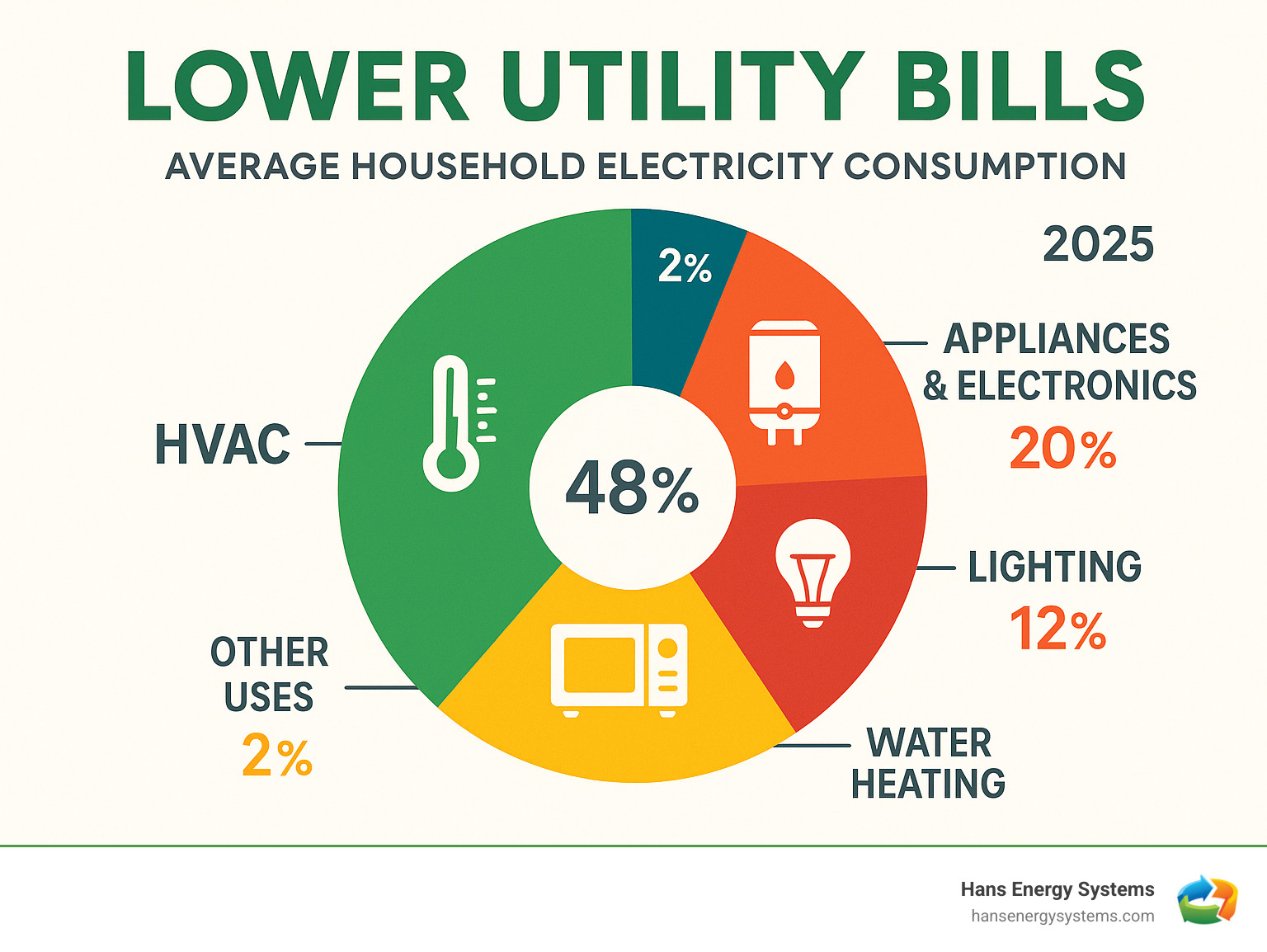
Foundational Strategies to Lower Utility Bills Before Going Solar
Think of your home’s energy efficiency like a leaky bucket; you’d patch the holes before trying to fill it. The same principle applies to achieving lower utility bills. Before generating clean energy with solar panels, it’s crucial to stop wasting the energy you already have. Reducing consumption first means you’ll need a smaller, more affordable solar system later.
Home energy audit
A professional home energy audit identifies where your energy dollars are escaping. Experts use specialized tools to find air leaks and inefficient appliances, then provide a prioritized list of improvements that can save 5% to 30% on annual energy bills. The investment often pays for itself within a year through savings.
Air sealing and insulation
Up to 40% of your heating and cooling energy can escape through holes and gaps in your home. Proper insulation and air sealing create a thermal barrier, so your HVAC system works less, leading to lower utility bills. Many air sealing projects are affordable DIY tasks with impressive savings.
Weather-stripping doors and windows
Gaps around doors and windows are major energy wasters, forcing your HVAC system to work overtime. Installing weather stripping is a cost-effective DIY project that can reduce your energy use by at least 10%.
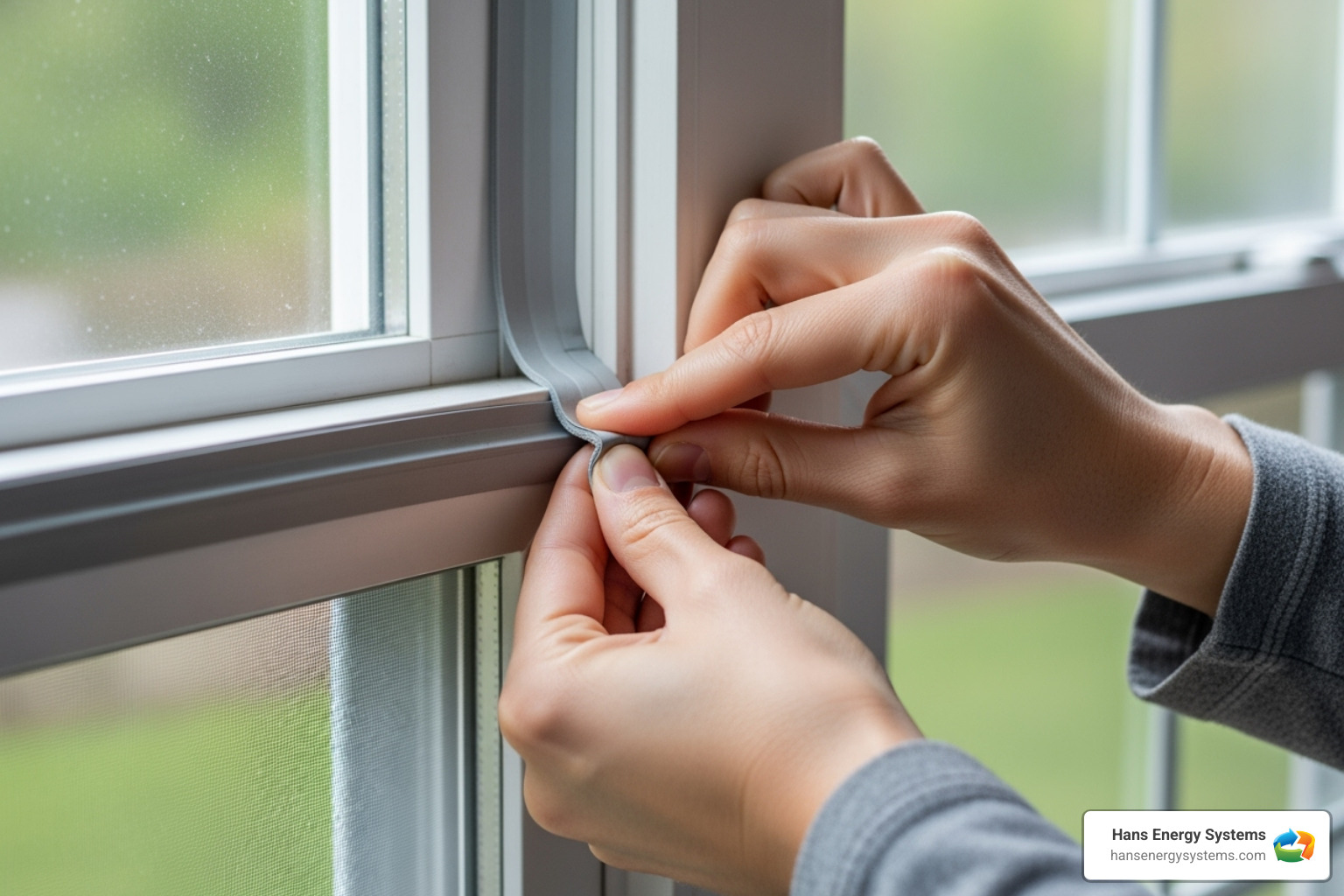
For guidance, check out this guide on Detecting air leaks in your home.
Vampire loads
Vampire loads are electronics that draw power even when turned off. Together, devices like your TV, cable box, and phone chargers can account for 5% to 10% of your residential energy use, adding over $100 to your annual bills.
Advanced power strips
Advanced power strips automatically cut power to electronics when they’re not in use. When you turn off the main device (like your TV), the strip cuts power to all connected accessories, eliminating phantom energy draw. Unplugging devices you don’t use regularly is another free and effective way to achieve lower utility bills.
Simple Behavioral Changes to Lower Utility Bills
Simple behavioral changes can lead to significant savings without any equipment upgrades.
Thermostat settings
Your thermostat controls your HVAC system, the biggest energy user in your home. In summer, set your thermostat to 78°F or higher. Each degree above 78°F saves 6-8% on cooling costs. In winter, aim for 68°F or lower. This can save up to 10% annually on heating. Cranking the thermostat wastes energy without speeding up temperature changes.
Using ceiling fans correctly
Ceiling fans use 90% less energy than central AC and can make a room feel up to 10 degrees cooler. In summer, rotate fans counter-clockwise to push air down. In winter, reverse the direction to circulate warm air. Remember to turn fans off when you leave a room—they cool people, not spaces.
Closing blinds and drapes
About 76% of sunlight hitting standard windows becomes heat inside your home. Close blinds on south and west-facing windows during hot parts of the day. Thermal curtains can reduce solar heat gain by 33%, easing the load on your AC.
Washing clothes in cold water
90% of a washing machine’s energy is used to heat water. Since modern detergents work well in cold water, this is an easy switch that can save around $63 annually and is better for your clothes.
Air-drying dishes and laundry
Your dryer uses about 6% of your home’s electricity. Use your dishwasher’s “air-dry” setting to reduce its energy use by 15-50%. For laundry, air-drying on a clothesline is free. If using a dryer, run loads back-to-back to use residual heat.
Cooking with smaller appliances
In hot months, your oven uses energy and makes your AC work harder. Use smaller appliances like microwaves or toaster ovens, which use less electricity and produce less heat. When using the oven, don’t open the door; use the light to check on food, as opening the door wastes energy.
For more detailed information, explore our guide on More info about energy efficiency.
Upgrading to Energy-Efficient Lighting and Windows
Strategic upgrades can create lasting lower utility bills.
Benefits of LED lighting
LED bulbs use 75% less energy and last 25 times longer than incandescent bulbs. An ENERGY STAR certified LED bulb can save over $80 in its lifetime and produces less heat, keeping your home cooler.
Energy savings from LEDs
A 100-watt incandescent bulb costs about $1.35 monthly to run, while a comparable 10-watt LED costs just $0.14. These savings add up quickly.
Lifespan of LEDs
LEDs can last 15 to 25 years, meaning less hassle and more savings. For options, check out ENERGY STAR certified lighting.
Daylighting with skylights
Maximizing natural light, or “daylighting,” with skylights and energy-efficient windows reduces the need for artificial light, contributing to lower utility bills.
High-efficiency windows
Old, single-pane windows are a major source of energy loss. Energy-efficient windows with Low-E coatings block heat transfer, stabilizing indoor temperatures and reducing HVAC workload.
Solar screens and window films
As a cost-effective alternative to new windows, solar screens and window films can block radiant heat and reduce AC usage. Installing them can reduce AC runtime by 60-90 minutes daily, a significant step toward lower utility bills.
Using Solar Power for Maximum Bill Reduction
Once you’ve improved your home’s energy efficiency, you can generate your own clean electricity. Solar power is your ticket to dramatically lower utility bills and energy independence.
How solar panels generate electricity
Solar (PV) panels act as personal power plants. When sunlight hits the silicon cells, it creates an electric current. An inverter then converts the direct current (DC) from your panels into the alternating current (AC) your home uses.
Net metering explained
Net metering is key to lowering utility bills. When your panels produce excess electricity, it flows to the grid, and your utility provides credits. You use these credits when you draw power from the grid, like at night. This system uses the grid like a battery, ensuring all your solar power helps reduce your bill.
Reducing reliance on the grid
Solar power gives you control over your energy future, freeing you from utility rate hikes by generating your own power from free sunlight. The more solar electricity you produce, the less you buy. Many San Diego County customers have reduced their bills by 80-100%.
The importance of system size
Properly sizing your solar system is crucial. A system that’s too small won’t cover your needs, while one that’s too large may be inefficient depending on utility policies. This is why reducing consumption first is key. An efficient home needs a smaller, more cost-effective solar system custom to its actual needs.
For more detailed insights, check out Solar Panels Transform Energy Efficiency.
Understanding Your Utility Bill and Time-of-Use Rates
Understanding your utility bill is a roadmap to savings. Let’s decode it.
Reading your utility bill
Examine your bill’s details, especially your kilowatt-hour (kWh) usage, to see how you compare to the national average of about 1,000 kWh per month. Note your rate per kWh and use utility portals to track hourly usage and spot waste.
Identifying peak vs. off-peak hours
Understanding time-of-use (TOU) rates is a secret weapon for lower utility bills. Electricity costs more during busy times. Peak hours are typically late afternoon/early evening (e.g., 4-9 PM), when electricity can cost 2-3 times more than during off-peak hours (late night, early morning, and weekends).
Shifting energy-intensive tasks
Knowing your TOU schedule allows you to be a strategic energy user. Run dishwashers, washing machines, and charge EVs during off-peak hours when rates are lowest. Customers have cut bills by 20-30% just by shifting appliance use.
Smart meters
Smart meters provide real-time electricity usage data. Comparing your late-night usage to peak evening usage can reveal vampire loads that drain power while you sleep.
To dive deeper, explore Solar Energy Revenue, Net Metering, and More.
Appliance and Electronics Tips to Lower Utility Bills
Smart appliance and electronics use is essential for maximizing savings, even with solar panels.
ENERGY STAR appliances
When replacing appliances, choose ENERGY STAR models. They use 10-50% less energy, leading to significant long-term savings. An old appliance can cost much more to run annually than a new ENERGY STAR model, with lifetime savings often exceeding the initial price difference.
Refrigerator and freezer efficiency
Your refrigerator is a major energy user. Simple, free tips can improve its efficiency:
- Keep it full to maintain temperature with less energy.
- Clean the condenser coils every few months to improve efficiency.
- Check the door seals with a dollar bill. If it pulls out easily, the seals may need replacing.
Unplugging unused electronics
Unplugging unused devices can reduce your monthly bill by up to 10% by eliminating sneaky vampire loads.
Standby power consumption
Many electronics use standby power even when “off,” which adds up across all your devices.
Using smart plugs and power strips
Use smart power strips to easily cut power to multiple devices. Smart plugs offer remote control via your phone. Common vampire electronics include phone chargers, TVs, cable boxes, gaming consoles, and coffee makers. Once you’re aware of them, they’re easy to manage!
Optimizing Your Home with Smart Technology and Maintenance
Smart technology and proper maintenance are secret weapons for achieving lower utility bills, turning a good energy-saving strategy into a great one.
Smart thermostats
Upgrading to a smart thermostat can save up to 10% on heating and cooling costs—a significant amount since this accounts for nearly half your energy bill. Smart thermostats learn your schedule, automatically adjusting the temperature when you’re away and before you return for optimal comfort and savings.
Programmable settings
Programmable settings allow you to set different temperatures for various times, and the thermostat remembers your preferences. Programming the thermostat for when you’re asleep or away makes a noticeable difference in your bills.
Remote control via apps
Most smart thermostats connect to your smartphone, allowing you to adjust the temperature remotely from anywhere, maximizing savings.
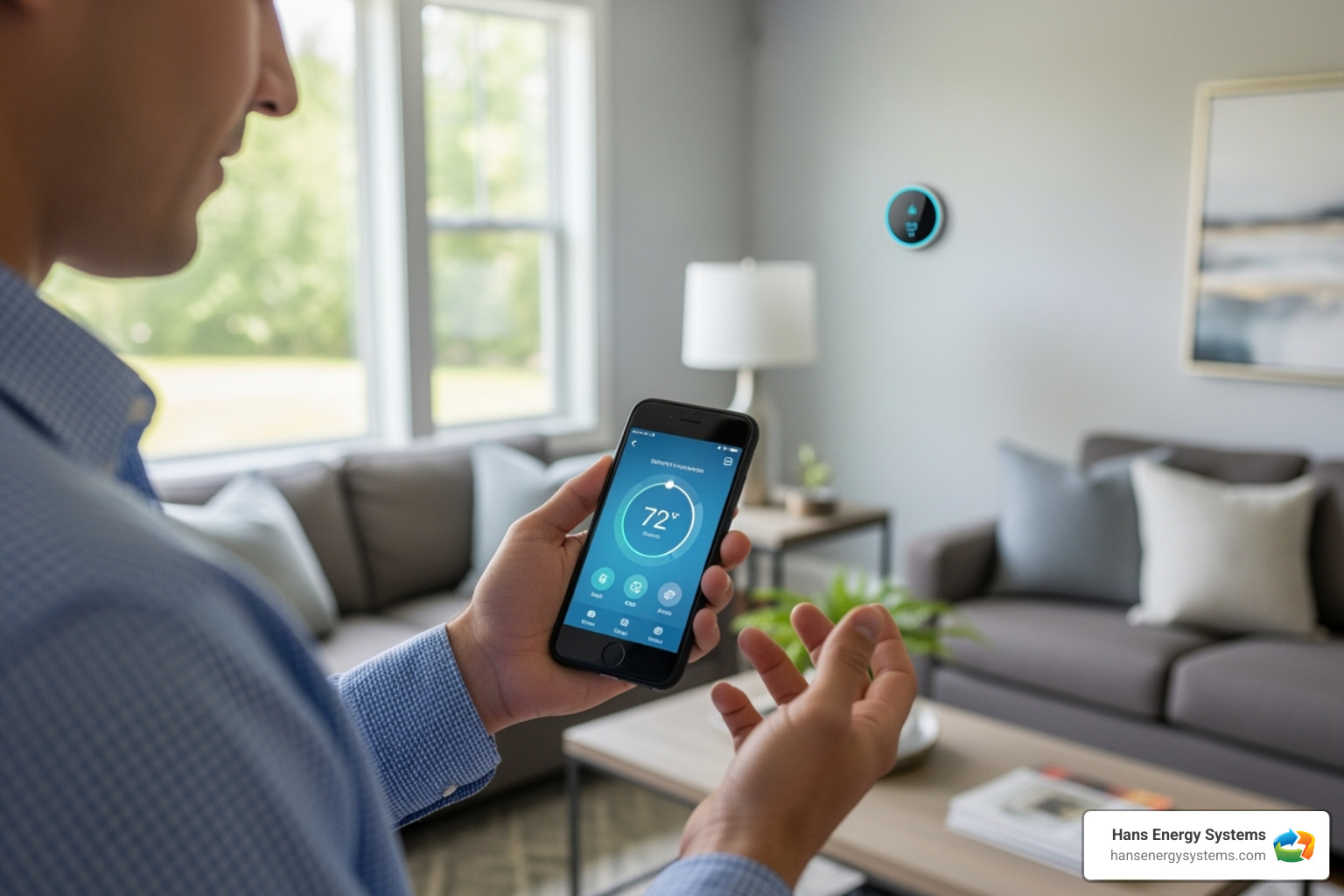
Energy storage and solar batteries
For solar homeowners, energy storage improves independence. Solar batteries store excess electricity generated during the day for use at night or during expensive peak rate hours. This helps lower utility bills by allowing you to use stored solar energy instead of buying expensive grid power, and it provides backup power during outages. To learn more, check out our guide on Energy Storage Solutions for Solar Systems.
The Critical Role of HVAC and Appliance Maintenance
Even energy-efficient equipment needs proper maintenance to deliver maximum savings.
Cleaning AC coils
During warm months, your outdoor AC unit’s coils can get dirty with debris, forcing the system to work harder. Keep the area around your outdoor unit clear. A clean system is an efficient system that means lower utility bills.
Replacing HVAC air filters
Regularly changing your HVAC air filter is a simple, impactful task. A dirty filter forces your system to work harder. Check your filter monthly and replace it every three months (or more often if you have pets). A MERV 11 filter or higher is recommended for a balance of air quality and efficiency.
Dryer vent cleaning
Lint buildup in your dryer vent forces the machine to run longer, wasting energy and creating a fire hazard. Clean the lint trap after every load and periodically check the outside vent to ensure it’s clear. Your clothes will dry faster.
Checking refrigerator seals
Worn refrigerator door seals let cold air escape, forcing the appliance to run more often. Test seals with a dollar bill; if it pulls out easily, they need replacing. This simple check prevents your refrigerator from working overtime.
Regular maintenance keeps your whole home’s energy system running smoothly. Whether you’re interested in Maximizing Energy Savings with Ductless AC or need HVAC Services in Poway, CA, proper maintenance is key to long-term savings.
Frequently Asked Questions about Lowering Utility Bills
Here are answers to common questions from San Diego County homeowners about achieving lower utility bills.
What are the most significant energy-consuming activities in a household?
Most of your energy consumption comes from a few key activities:
- Heating and cooling (HVAC) is the biggest energy user, accounting for about 48% of your consumption.
- Water heating is next, at about 18%.
- Your refrigerator is often the second-largest electricity user after your HVAC system.
- Clothes drying (6%) and lighting are other major categories, though LED bulbs have made lighting much more efficient.
How much can I really save by unplugging appliances?
Vampire loads—electricity used by electronics when “off”—can account for 5% to 10% of your total energy use. This can save the average home over $100 per year. Devices like TVs, cable boxes, and chargers all draw power when not in use. Tackling vampire loads is easy. Using power strips with on/off switches allows you to cut power to multiple devices at once.
Does the type of home I live in affect my potential savings?
Yes, your home type significantly affects your energy use and potential for lower utility bills.
- Apartment vs. house: Apartments may benefit from shared walls but can suffer from poor insulation in ceilings or floors. Houses have more exterior surface area, making insulation and air sealing critical.
- Insulation levels: Proper insulation is crucial for any home type to retain conditioned air and prevent the HVAC system from working overtime.
- Top-floor apartments: These units often have higher cooling bills due to heat gain from the roof, where attic temperatures can reach 150 degrees.
- Window quality: The quality and quantity of windows are also important. Older, single-pane windows cause significant heat gain in summer and heat loss in winter, making upgrades or treatments essential for lowering bills.
The good news is that every type of home has opportunities for energy efficiency improvements. We’ve helped homeowners in everything from vintage San Diego bungalows to modern condos reduce their energy consumption.
Conclusion
You now have a roadmap to lower utility bills that can transform your budget and home comfort. This journey is about taking control of your energy future.
Think of this approach in three essential parts: Reduce, Produce, and Optimize.
Reducing consumption is the first step. Sealing air leaks, upgrading to LEDs, and adjusting your thermostat are foundational changes that can lower bills by 10-30%.
Producing your own energy with solar is highly effective in San Diego County. An efficient home needs a smaller, more cost-effective system, and net metering helps you get credit for the power you generate.
Optimizing usage ties it all together. Smart thermostats, proper HVAC maintenance, and energy storage solutions ensure you get the most out of your system.
This comprehensive approach has compounding benefits: you save money, increase your home’s value, improve comfort, and protect yourself from future rate hikes.
At Hans Energy Systems, we’re passionate about helping San Diego County homeowners achieve energy independence and the peace of mind that comes with predictable, lower utility bills.
Your journey to energy efficiency and solar power doesn’t have to be overwhelming. We can guide you through every step, from an energy audit to designing the perfect solar system for your newly optimized home.
Ready to start your journey toward energy independence and dramatically lower utility bills? Let’s work together to create a solution that’s perfectly custom to your home and your goals.
Request a Custom Quote for Solar Panel Installation in Poway, CA


